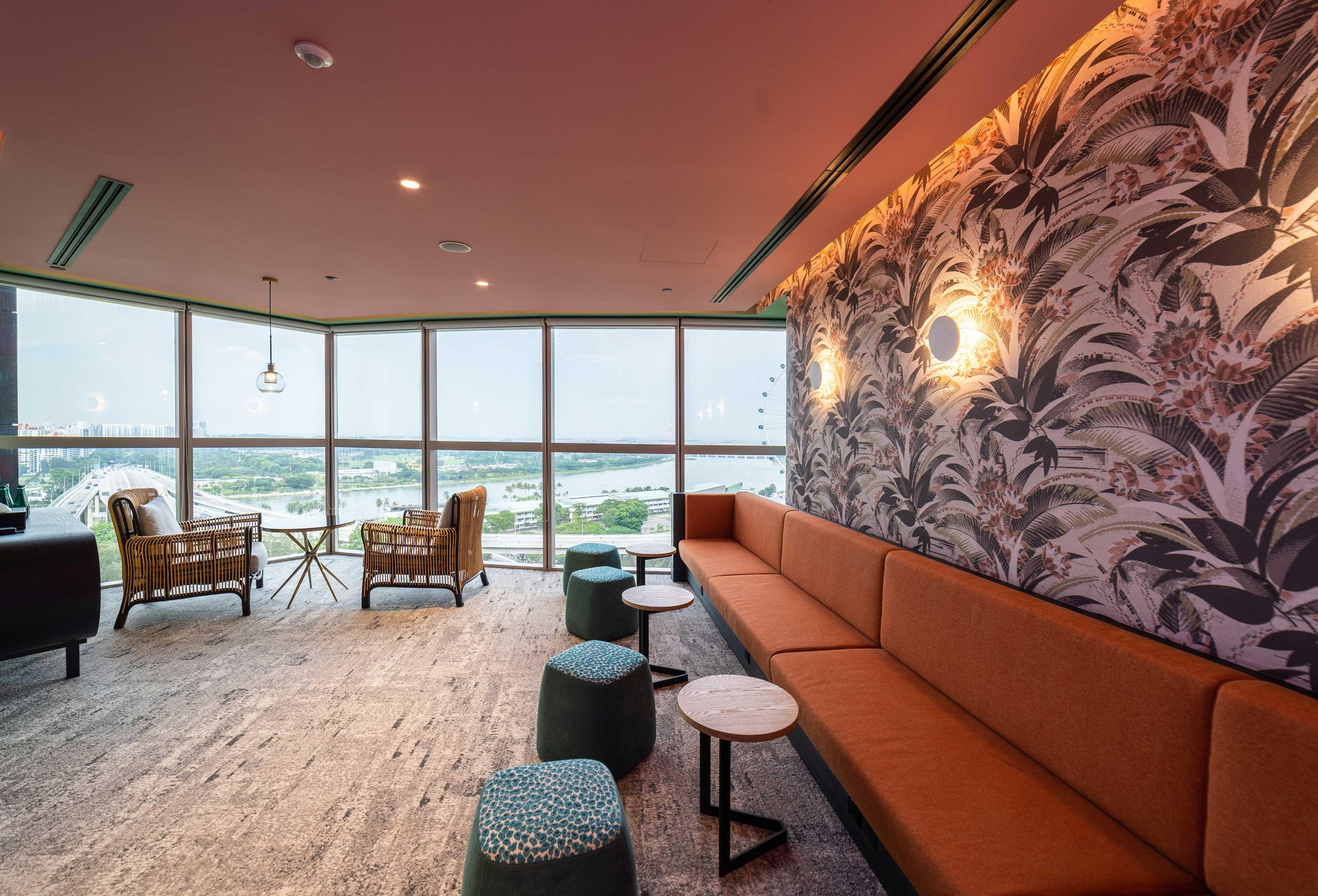
4 major hospitality trends and how they are translated to Hilton’s office space design
The year is 1919. The place, Cisco, Texas. A young Conrad Hilton arrives in town with the intention of buying a bank and becoming a banker. He changes his mind at the last minute and buys a hotel instead. And so begins the journey of the iconic Hilton hotels.
Back then, the hospitality landscape was very different. Hotel lobbies were not air-conditioned, public rooms did not have cold running water. Televisions in each guest room was unheard of. All this was soon to change, as Hilton hotels evolved, thrived and grew to set a new benchmark for luxury in hospitality.
Much has changed in the industry since then — and Hilton has been at the forefront, leading these changes. As the brand entered its 100th year, we had the privilege of designing its new corporate location in Singapore. We wanted the office space design to reflect the brand’s passion for hospitality and pay tribute to its resilience and adaptability through the last century.
Here are 4 major macro trends that are shaping the industry — and a look at how Hilton’s new workspace reflects them all.
1. Experience economy
Millennials make up a huge chunk of the population that prioritises travel and tourism on a regular basis. This is the generation that prefers collecting memories over collecting things. They typically do not want to spend their budget on cookie-cutter vacations and clichéd souvenirs — they would much rather go for unique experiences like swimming with manta rays, enjoying gourmet picnics or taking up local handicraft classes.

We kept this hospitality trend in mind when creating Hilton’s office design concept. Far from being an impersonal, corporate office, this space is an experience in itself. Much like a stunningly designed luxury hotel, the workspace is conceptualised to engage all five senses. The hybrid layout frees people from being tied down to a single desk all day — there are plenty of unconventional meeting areas, friendly collaboration spaces, and private nooks to work from. Employees can curl up on the wooden stepped seating areas and enjoy a jaw-dropping view of the Singapore skyline as they work. They can sink into the luxe leather sofas or bag one of the comfortable high-backed armchairs for an hour or two. The cosy café-like setups and the high bar seating offer other interesting alternatives.

The office affords a certain degree of personalisation too. The lounges and informal seating areas are fitted out with bespoke furniture, and customised upholstery and textiles. The modular tables in the pantry can be adjusted to dining or cocktail heights, or moved around as needed for different events. These elements add an extra touch of luxury and assure guests and employees of a unique experience they would find nowhere else.
2. Wellness
There was a time when frequent travellers would complain about the difficulties of maintaining a healthy lifestyle while on the road. Today, travel has actually become a way to achieve physical and mental wellness. With fitness centres, yoga studios, pools, spas and a variety of dietary options, the wellness tourism industry stands at over $639.4 billion, globally. Of course, this is married to convenience and aesthetics too. Nature retreats and infinity pools are incredibly popular, as are services like Hilton’s Five Feet to Fitness, which brings a fully-functional gym right to patrons’ rooms.
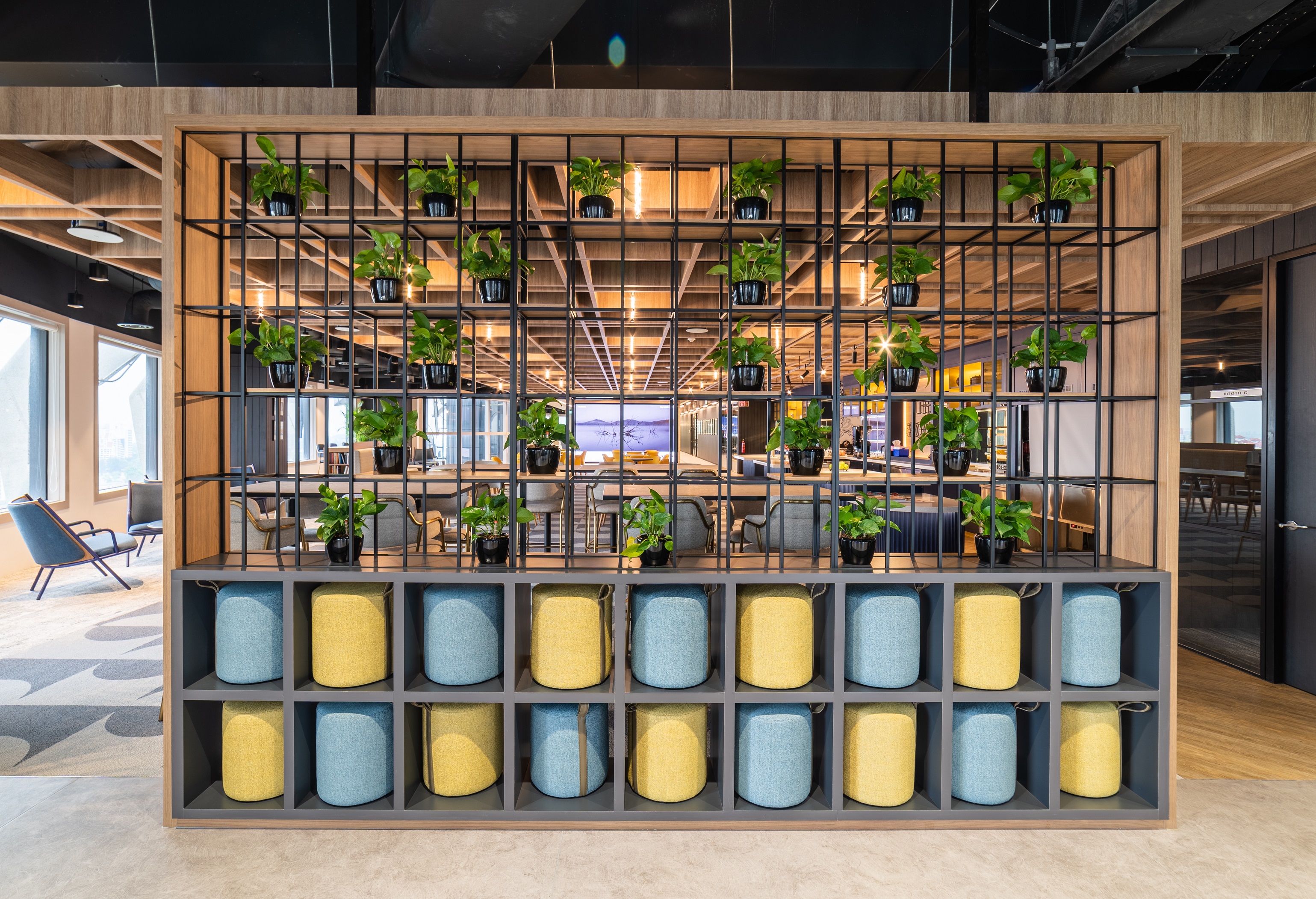
We incorporated this trend into Hilton’s workplace strategy with soothing design concepts that create a happy, healthy and productive work environment. Biophilic elements like indoor plants, wooden interiors and sustainable fittings and furnishing allow employees to enjoy a certain closeness to nature through the workday. Natural sunlight streams in through the wall-to-wall windows, and infuses the space with a warm, positive vibe. A well-equipped gym and shower room lets employees keep up their fitness resolutions, even on a busy day.
We utilised home-inspired design elements to make the office more cosy and welcoming. Comfy, high-backed armchairs, soothing recessed lighting, beautiful wall murals and other arts and artefacts are incorporated across the space, thereby creating a comfortable, homely environment in which people can unleash their creativity.
3. F&B as an experience
Tourists today look for Insta-worthy moments in every breakfast spread; they seek an experience with every cup of coffee they drink. They are more gastronomically aware, and they work towards enjoying a mindful, positive relationship with their food. They want to know exactly what kind of food they are eating and are particular about the ingredients that go into making it. They want to explore the diversity of a new place through local dining experiences, regional produce and indigenous recipes. So, hotels hosting cooking classes, wine tours and farm-to-table experiences are becoming more common.
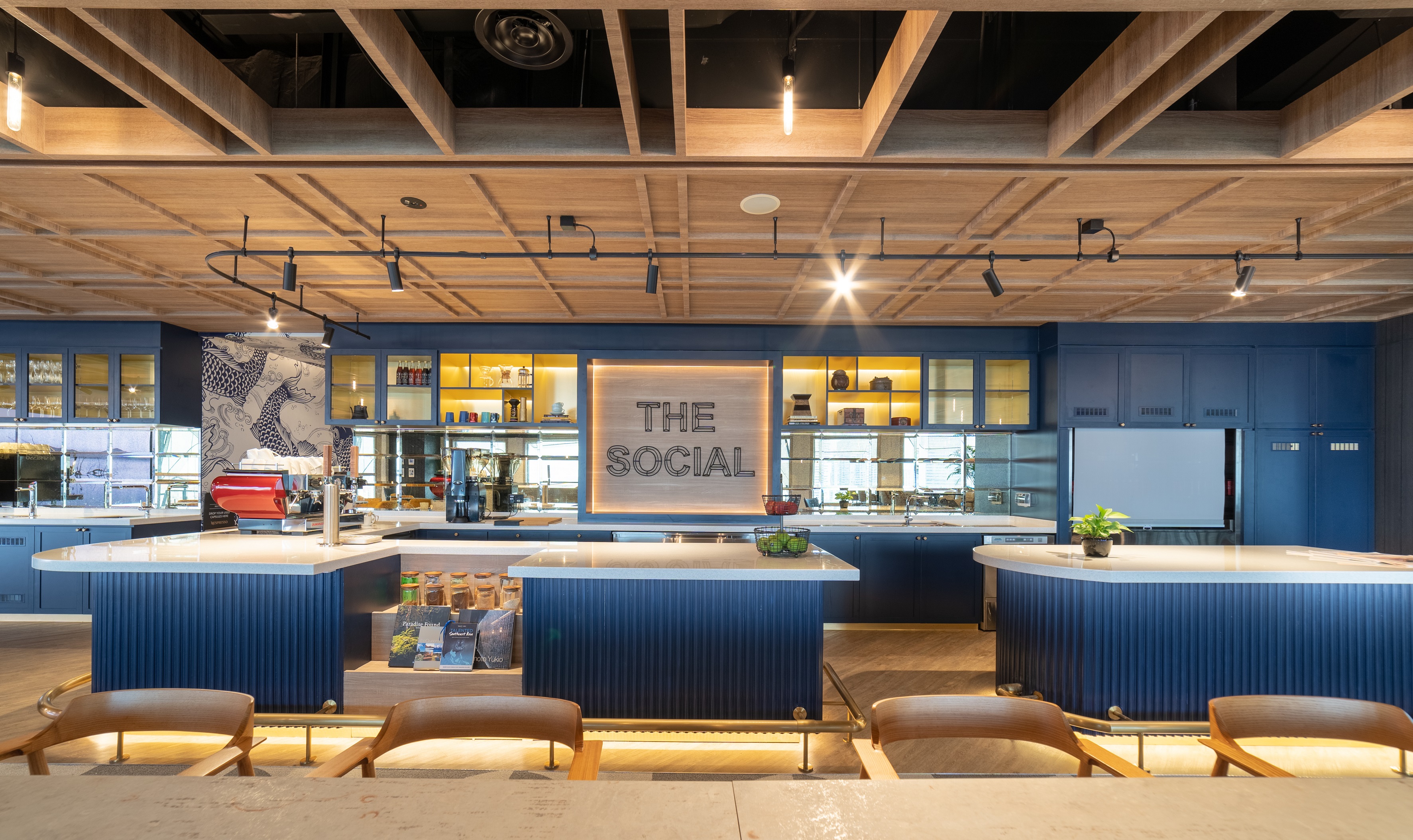
This is reflected in the Hilton office through a truly elevated F&B experience. Unlike just any office pantry, this workspace houses a café where employees can really relax and unwind. There is a top-of-the-range coffee bar, where a barista serves up anything from frothy cappuccinos to free-flowing cold brew on tap. The tables are arranged in cosy clusters, which lets people chat and bond as they enjoy their brew. Just because they are at work doesn’t mean employees have to settle for a less-than-perfect gastronomic experience. The pantry counter conceals induction stoves that enable the café staff to put up restaurant-style buffet stations serving lip-smacking hot food. For quicker breaks, employees can head to the micro-kitchen shop to grab some healthy fruits, juices and snacks.
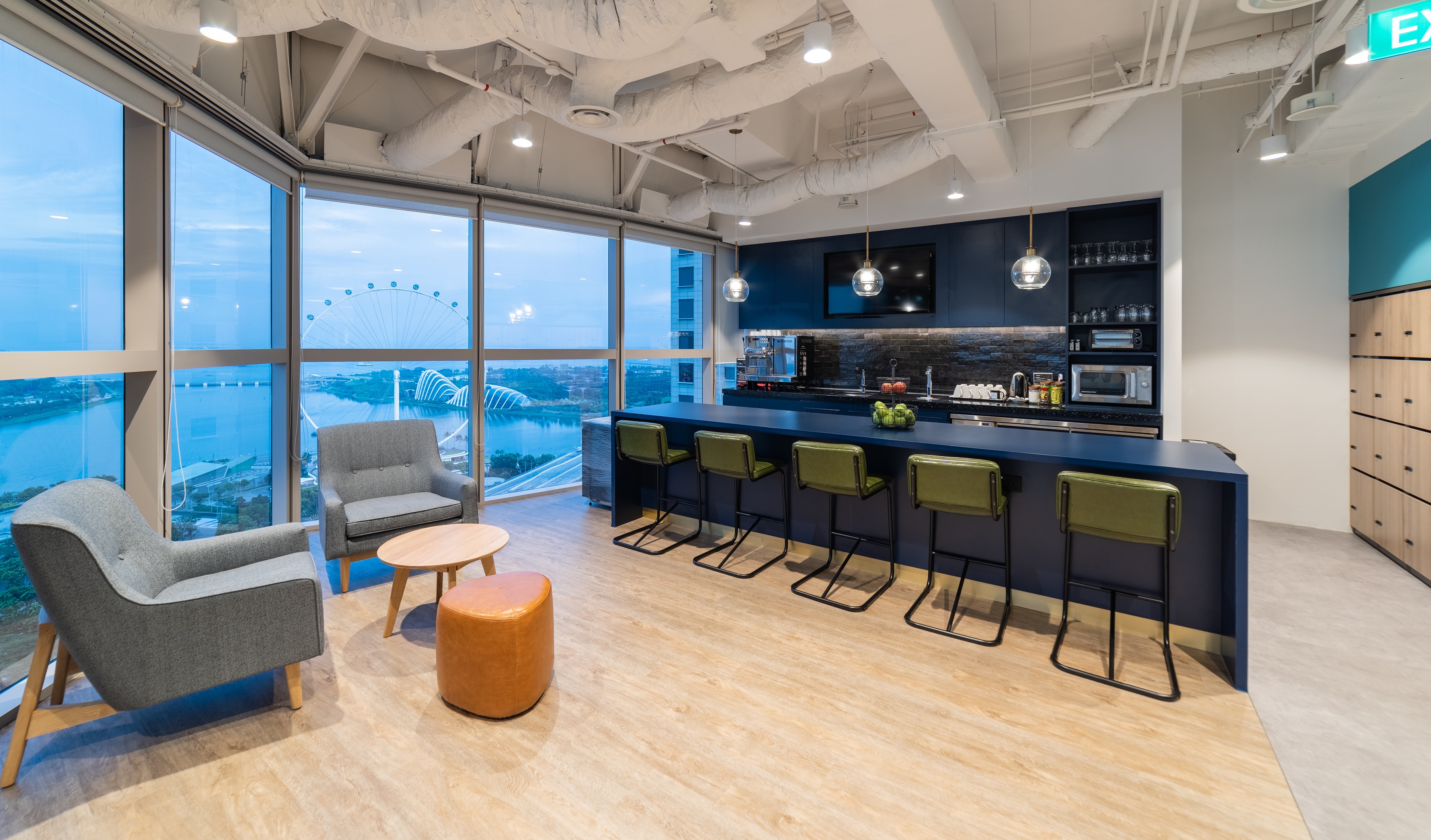
4. Focus on technology
Modern hotel guests demand — and get — technology-driven conveniences when they travel. With smart cards and facial recognition technology enhancing security, smartphone-operated features like mobile check-ins and digital concierge services offering conveniences, and VR and AR services enriching guests’ overall experience, the hospitality industry has technology woven into its very foundation.

And so it is with the Hilton workspace in Singapore. The office is fully A/V integrated to enable remote collaboration between various teams. There are interactive screens placed across the office that can do anything — from helping guests find their way around to providing real-time information about the temperature, air quality and energy consumption of the building. Employees can use these interactive screens to find empty meeting rooms and book them with a swipe or two. Some rooms are even fitted with a unique Magic Glass, which goes from transparent to opaque at the touch of a button.
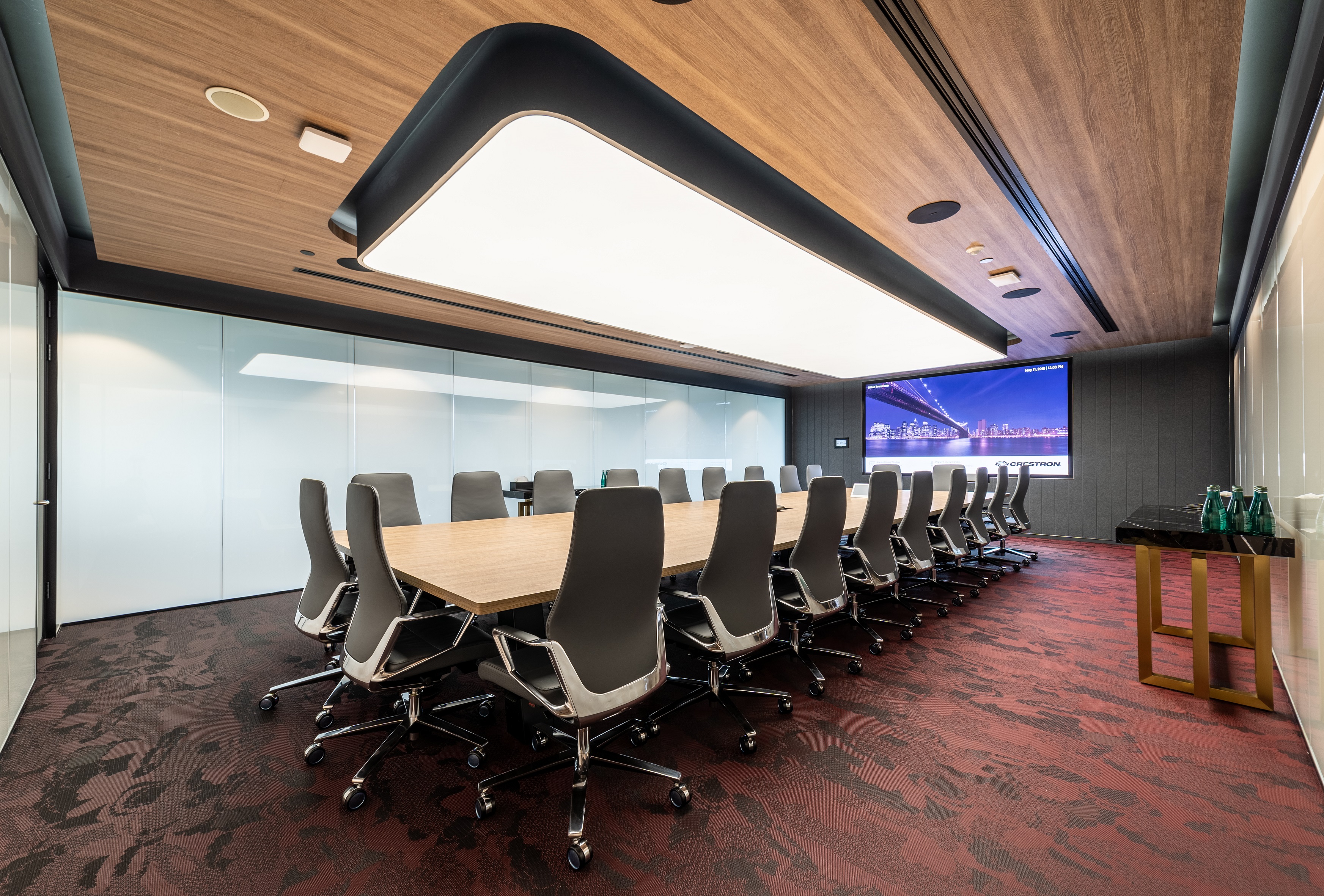
Want your corporate office design to be a true representation of your industry? We can help you there.
